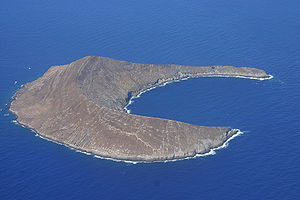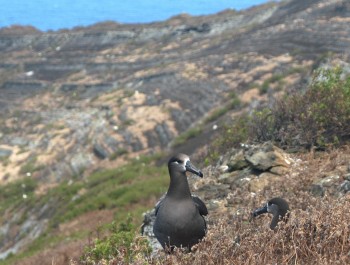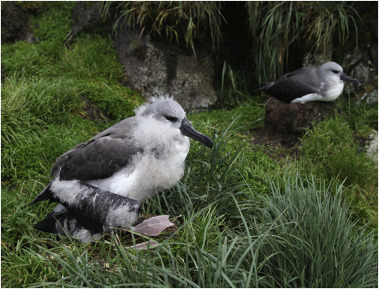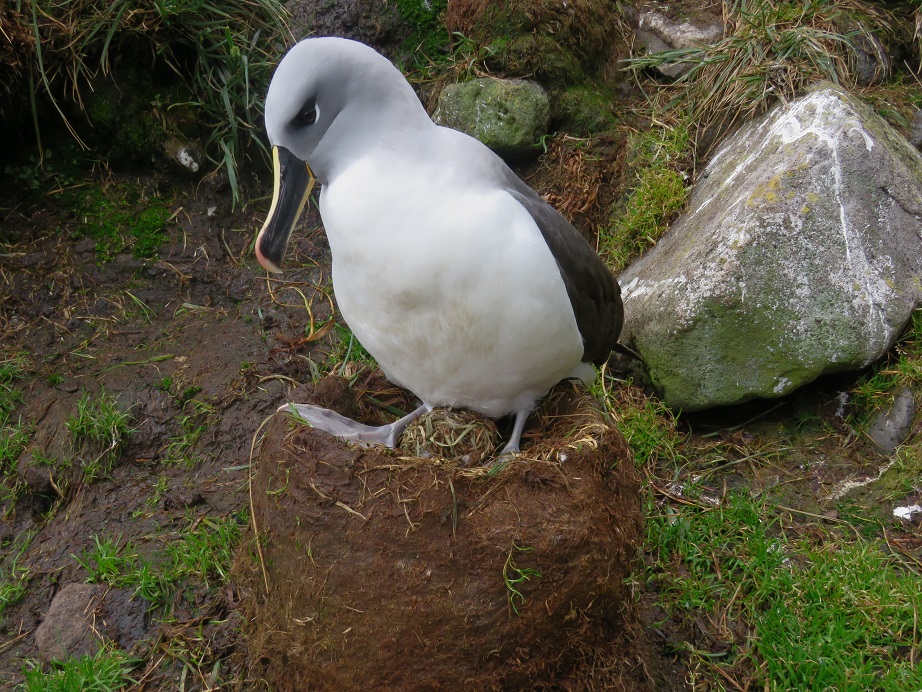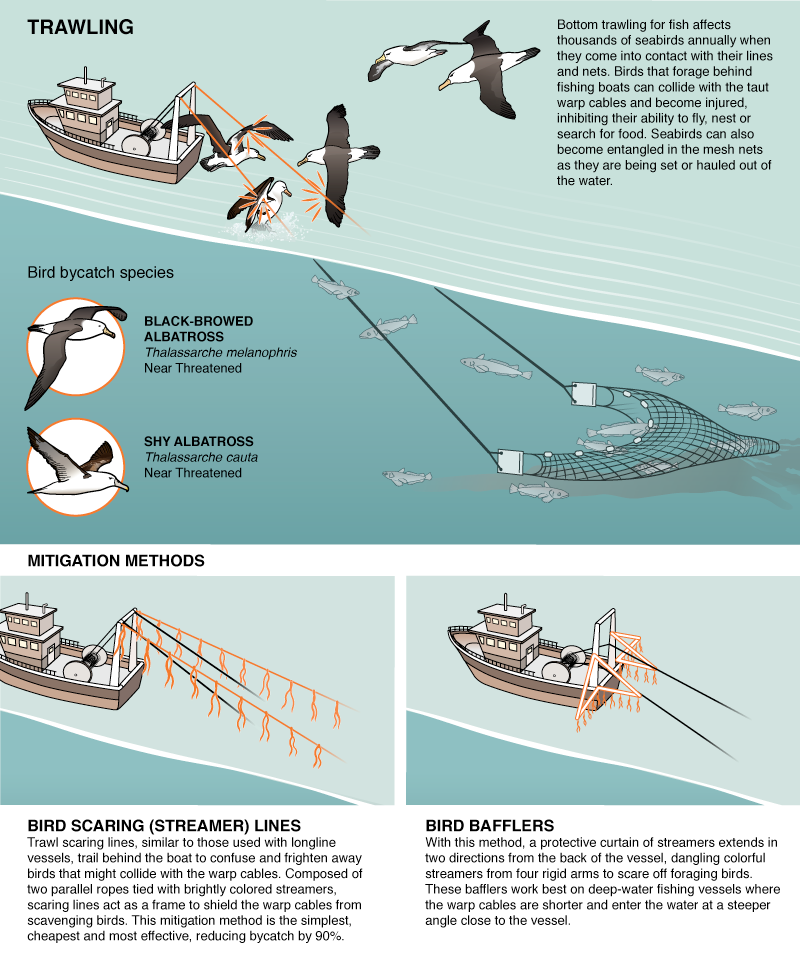Gough Island and its territorial waters in the South Atlantic, a UK Overseas Territory, is a Tristan da Cunha nature reserve, part of a UNESCO World Heritage Site, a Ramsar Wetland of International Importance, an Important Bird & Biodiversity Area (IBBA) and an Endemic Bird Area (EBA), as well as being described as the most important seabird island in the word. The major threat to biodiversity on Gough Island is the presence of introduced House Mice Mus musculus that prey upon chicks of the Critically Endangered Tristan Albatross Diomedea dabbenena and of several other threatened ACAP-listed seabird species, as has been regularly covered in ACAP Latest News. An Operational Logistics Manager is now required for the Gough Island Restoration Programme that aims to eradicate the mice next year.
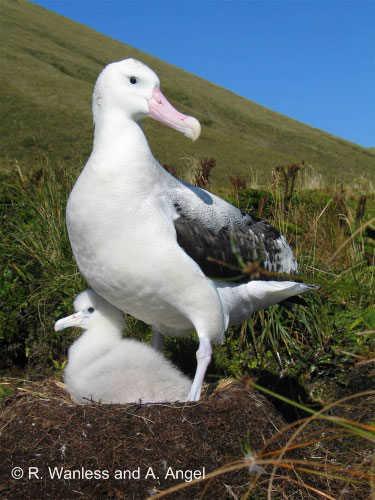
A Tristan Albatross guards its downy chick on Gough Island, photograph by Andrea Angel & Ross Wanless
“Working in partnership with the Tristan da Cunha Island Council, Island Conservation, Birdlife South Africa and the Department of Environmental Affairs in South Africa, the RSPB [Royal Society for the Protection of Birds] is now planning for the implementation of the mouse eradication operation in the Southern Hemisphere winter of 2019.
This is an exciting opportunity for a person experienced in the logistical deployment and management of complex rodent eradications involving aerial baiting. The Operational Logistics Manager will plan and deliver the mouse eradication operation during 2019 (building on planning work carried out in the last two years). He/she will lead on key aspects of the Operational Plan, in agreement with the Programme Manager.
The Operational Logistics Manager will also manage a team of people during the development and delivery phases of the operation. Some members of this team will report directly to the Operational Logistics Manager whilst others will be employed by partner organisations.”
More information on the post and how to apply here. Closing date for applications is 11 May 2018.
John Cooper, ACAP Information Officer, 20 April 2018

 English
English  Français
Français  Español
Español 